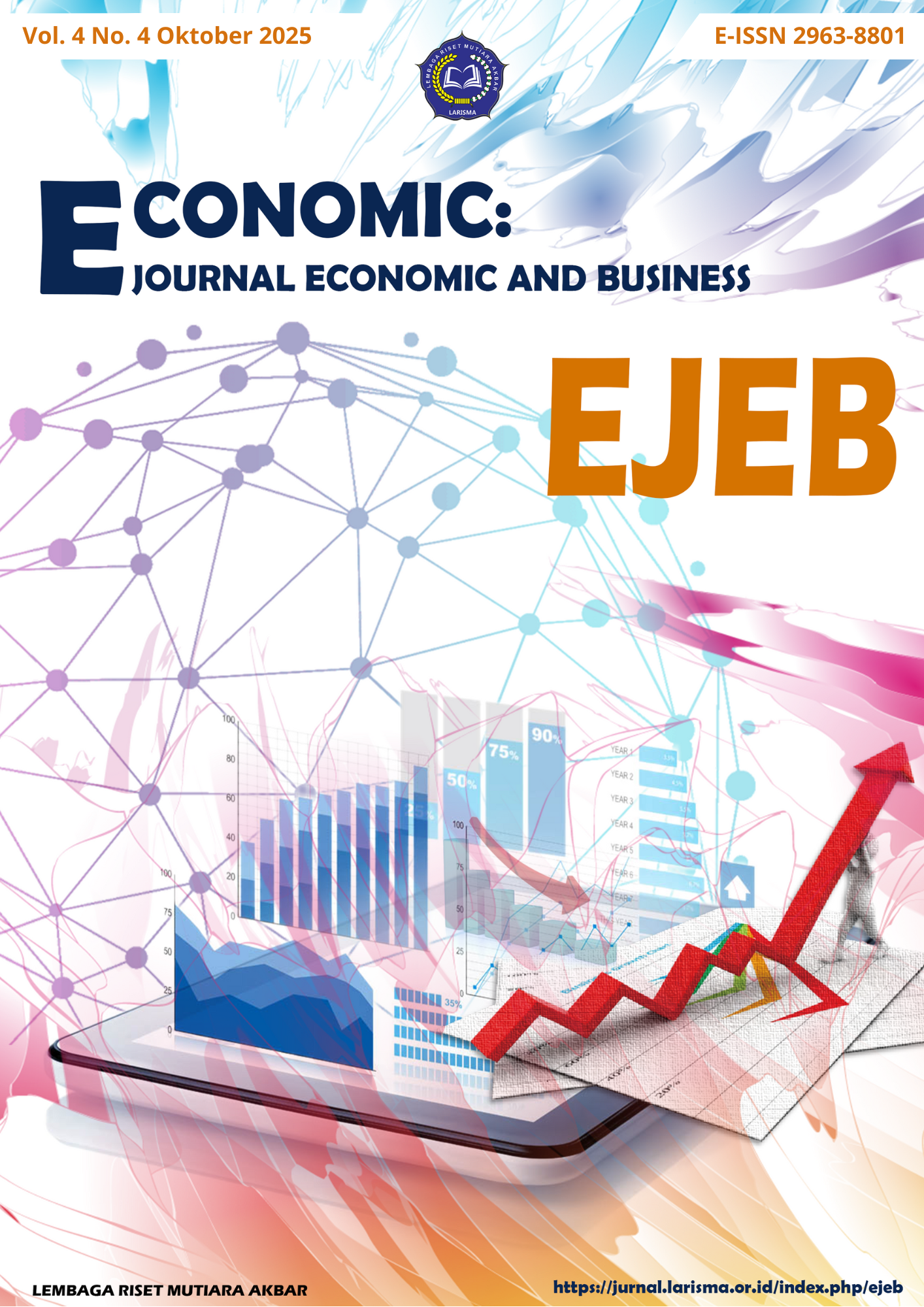User Experience-Based Website Development to Increase Customer Satisfaction and Sales of Maidanii Dimsum Business
Main Article Content
Abstract
This study aims to analyze and develop a User Experience (UX)-based website to increase customer satisfaction and sales at the Dimsum Maidanii MSME. The background of this study is based on the low level of customer satisfaction with the existing website, where 70% of respondents said they were dissatisfied and 96.7% suggested further development. The research method used is Research and Development (R&D) with a waterfall model, which includes the stages of needs analysis, design, implementation, testing, and maintenance. The research sample consisted of 30 customers, 1 business owner, and 2 media experts. Data collection was carried out through interviews, observations, questionnaires, and sales documentation. The evaluation instrument used the System Usability Scale (SUS) to measure user experience and customer satisfaction. The test results showed a SUS score of 95.7 which is included in the "Excellent" category, indicating the website is easy to use and effective in increasing customer interaction. In addition, a comparison of sales data from June (before development) and July 2025 (after development) showed an increase of 3.22%. These findings demonstrate that implementing UX principles on websites impacts customer satisfaction and increases sales. This research confirms that a UX-based digitalization strategy is a strategic step for MSMEs to compete in the digital economy.
Article Details

This work is licensed under a Creative Commons Attribution-ShareAlike 4.0 International License.
References
Abdullah, A. (2018). Pengantar teknologi informasi. Penerbit Andi.
Amalia, N., Aldolyn, V. R., Fadhli, M., Alexzander, A. L., & Kusuma, R. M. (2024). Pemanfaatan website desa dalam upaya optimalisasi pemasaran produk UMKM di Desa Karanglo Kabupaten Jombang. Jurnal Pengabdian Masyarakat Akademisi, 2(3), 123–131. https://doi.org/10.59024/jpma.v2i3.894
Andika, T. P., & Ramadhan, F. M. (2022). Analisis emosi dan kepercayaan pengguna pada aplikasi layanan publik digital. Jurnal Interaksi Manusia dan Komputer, 5(1), 22–31. https://doi.org/10.2345/jimk.v5i1.6789
Anggraini, N. P. N., Rustiarini, N. W., & Satwam, I. K. S. B. (2024). Pemanfaatan website sebagai strategi pemasaran untuk meningkatkan penjualan usaha mikro kecil dan menengah. Jurnal Masyarakat Mandiri, 7(1), 55–65. https://doi.org/10.31764/jmm.v7i1.12150
Anton, A., Maruloh, M., Nurlela, S., Situmorang, C. A., & Alfarizzy, V. F. (2024). Pelatihan penggunaan website dan SEO untuk meningkatkan pengunjung website UMKM. Majalah Ilmiah UPI YPTK, 30(2), 202–210. https://doi.org/10.35134/jmi.v30i2.156
Asosiasi Penyelenggara Jasa Internet Indonesia (APJII). (2023). Laporan survei internet Indonesia tahun 2023. APJII. https://survei.apjii.or.id/survei
Bangor, A., Kortum, P. T., & Miller, J. T. (2009). Determining what individual SUS scores mean: Adding an adjective rating scale. Journal of Usability Studies, 4(3), 114–123. https://uxpajournal.org/determining-what-individual-sus-scores-mean-adding-an-adjective-rating-scale/
Branch, R. M. (2009). Instructional design: The ADDIE approach (1st ed.). Springer. https://doi.org/10.1007/978-0-387-09506-6
Dewi, E. N. K., Kharisma, A. P., & Rahman, M. A. (2025). Penerapan prinsip aesthetic usability effect untuk mengukur tingkat usability pada aplikasi M-Banking BCA Mobile menggunakan usability testing. Jurnal Pengembangan Teknologi Informasi dan Ilmu Komputer, 10(2), 77–92.
Dimsum Maidanii. (2025, Mei 20). Dimsum Maidanii: Cita rasa lezat dalam setiap gigitan. https://dimsummaidanii.blogspot.com
Fadzana, M. S., & Diartono, D. A. (2024). Pengaruh user experience (UX) design terhadap kemudahan pengguna dalam menggunakan aplikasi TIX ID. Jurnal JTIK (Jurnal Teknologi Informasi dan Komunikasi), 8(3), 597–604. https://doi.org/10.35870/jtik.v8i3.2080
Kurniawan, C. N., Zaman, B., & Bahri, S. (2022). Analisis usability pada website Ayomulai menggunakan metode System Usability Scale (SUS). JTRISTE, 9(2), 90–102. https://doi.org/10.55645/jtriste.v9i2.381
Nasution, M. A., & Al-khowarizmi, A. K. (2024). Meningkatkan Potensi Lokal Melalui Website dan Digital Marketing. Perancangan Website Desa, Sekolah, UMKM. Jurnal Pengabdian Masyarakat Larisma, 1(2), 56-61. https://doi.org/10.56495/jpml.v1i2.751
Nielsen, J. (2012). Usability 101: Introduction to usability. Nielsen Norman Group. https://www.nngroup.com/articles/usability-101-introduction-to-usability
Verisign Inc. (2015). Benefits of having a business website: Consumer trust survey. Verisign, Inc. https://www.verisign.com/en_US/website-presence/online/consumer-trust-survey/index.xhtml

